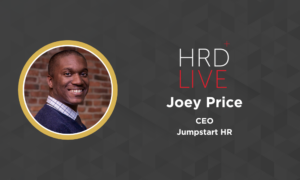Delivering a successful people transformation
- 6 Min Read
How can HR professionals bring about a truly effective people transformation initiative? People and Transformation guru David Roberts shares his experiences and gives people leaders his top tips for transformation.
- Author: David Roberts
- Date published: Sep 25, 2019
- Categories

This is a topic I can speak all day long about, but I promise I won’t and I will try and give some concise advice for those embarking, in the midst or simply trying to learn more. Personally, I’ve always had two hats, one of embedding a people strategy and one of large-scale people transformations. Both are complimentary and are often worn at the same time although my focus has been increasingly on the transformation of the business and its people. This being some notable Technology mergers and acquisitions (M&As) and operating model/organisational structure revisions.
The topic of ‘change’ and ‘transformation’ are wide ranging, so I’ll focus in on a few areas; what’s the context we now operate in as senior people professionals? What approach has worked for me? How to start and manage the transition? and how do you measure the success?
Our environment
The macro environment is chaotic but don’t worry, I won’t go there! I will say the need for organisations to be ever more adaptable is apparent whether you’re a start-up or an establish blue chip. Companies are constantly looking at new ways to compete in their markets and require an organisation to deliver those new competitive ways.
In this modern environment, with the company objectives changing, you must always evolve. You must have a mindset and a plan that can pivot on these evolutions.
My philosophy
I’m a believer in the concept of change or transformation being the achievement of A to B and the piece in between being the transition. I also believe in this current environment you can be clear on what you want to achieve but have to pivot along the way to get there.
I’m not one for being over-academic, but some reading on this topic I’ve leaned on through my career is William Bridges literature on ‘managing the transition’ as well as using some of the principles of the Agile methodology. I might coin the phrase ‘Adaptive transition’ as that outlines how I have managed all my successful outcomes.
Starting out
When starting out the challenge, however large or small, I would suggest you start with the B, so “what is the desired future state?” and “what does success looks like?”. Then move onto the A so “where are we today” in relation to B. For example, in an organisational transformation through a M&A, this can be a structure implemented, top talent retained, working on common goals, cost & revenue synergies met, implementation of certain people practises or all of the above and more.
This should be realistic and devised through as much collaboration and consensus. I see many small to large programmes devised in a back office and it has no resemblance to reality but more importantly what senior leaders want. Sign this off and get people behind it as the next bit will become easier.
Adaptive transition
With the end state in mind and the gap between where you are today defined, you can start mapping out some clear milestones. Most people can define some steps to get you from A to B and I won’t cover that element in detail but I would say that you can be as programme heavy as you like. Personally I like to give some structure and commitments but ensure there’s flex to manoeuvre and pivot and that’s where I tend to use agile principles that are relevant. This is all whilst ensuring you’re still aiming towards your end state.
The key in my mind, is the transition and how you take people through these steps and here’s a few key things to think about.
Have a story
Communications are a very obvious one but one that people professionals will often leave to another department or be in the background when it’s being created. For me I’ve always ensured this is a priority that I’m either accountable or have responsibility for. In my experience and whether this be establishing a start up or launching a new market leading brand, have ‘a story’ and teach people how to tell it. This will be linked to the planning done up front but will need a narrative to align. This also goes beyond the TP as you want to ensure ‘the story’ is aligned to what you want to achieve not contradictory. I’ve seen some alarming comms go out internally and externally that can de-rail what you’re doing.
Think about the culture, mindset and DNA
What is the desired end state and how do you want people to act? Depending on the size of the change you may consciously decide to revisit this. This can have numerous benefits of celebrating the differences in cultures and gives you a chance to assess what really is the way you want people to act in this new world. Using the example, two organisations will always have differences, while the transition is happening, you can allow people to act in the way they’ve done previously but also allow them to be part of the process of creating the new organisation. Great involvement and buy-in!
Assess and invest in skills
What is the desired state and run a separate gap analysis on the org, the teams and if you have scope, individuals? Again, this can be light touch but allows you to invest in the right areas so transitioning becomes more effective. In the example, new technologies or market areas could be the gap or even when creating a global team, ensuring leaders have the right capabilities to lead global teams.

Measure it
It’s easy to embark on your challenge without really measuring whether you’ve achieved it and it’s a trap we fall into in the people profession as people find it hard to define tangible outcomes. You can use normal project time and cost measures but I like to use very people centric but commercially linked measures, which are ultimately output focused measures.
Some measures I’ve used to good effect are; talent retention, wanted retention, productivity (i.e. people cost vs revenue), efficiency org design measures, a set of pulse engagement questions and time to offer. You’re probably thinking “how do we achieve this whilst doing BAU and maintaining our business results?”. Well, it’s these measures that will help you hit the numbers through transition but more importantly set you up for success beyond!









